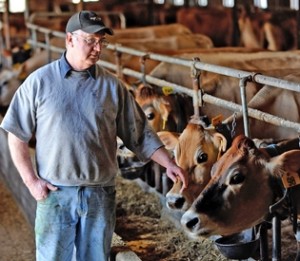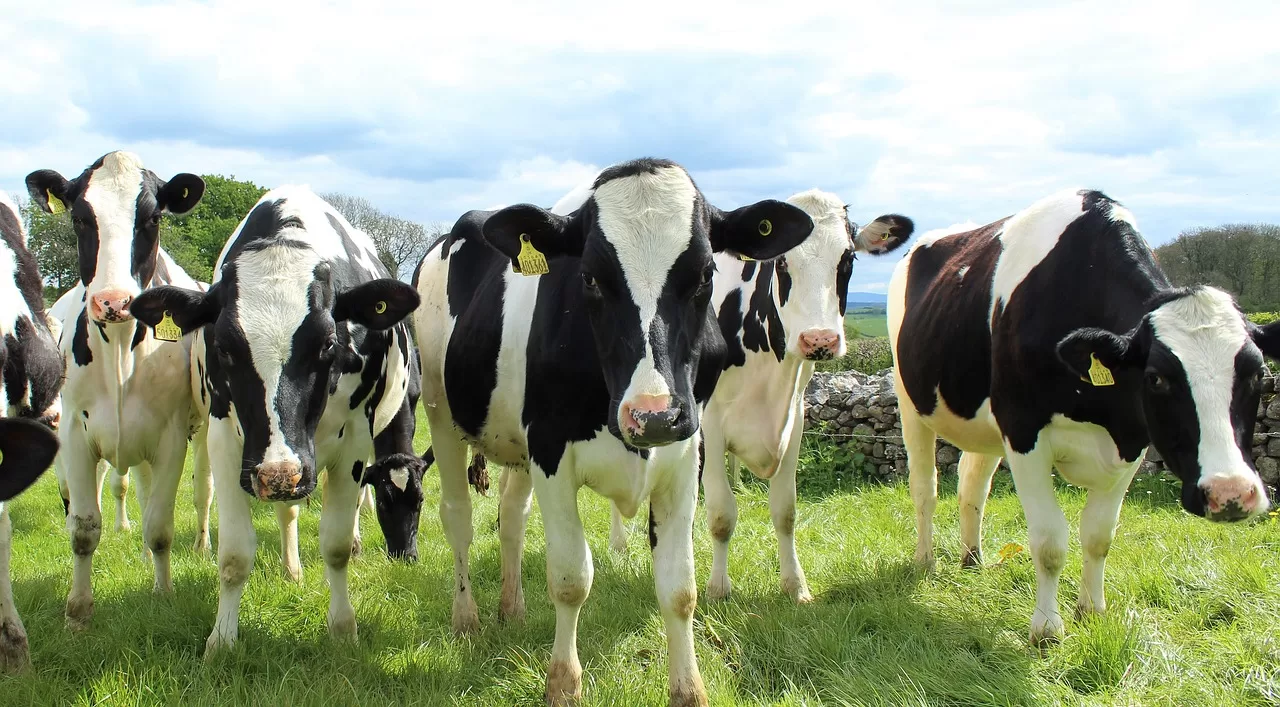Generally, there are animals on every dairy farm that end up costing you money rather than making you money. The question is, how many? This question is something that every dairy producer should ponder. Cows in milk are the only animals on dairy farms that are making money every day. Having dry cows and growing heifers are a necessary and important part of any dairy operation. They must

be well cared for to obtain maximum herd profitability, but they are not generating income. Research has shown that cows really only need a 40 to 50 day dry period, and well grown heifers can be very productive if calved between 22 to 24 months of age. Any dry days a cow has over 60 and any days that a heifer is not milking after her second birthday should be considered non-productive and has the potential to greatly decrease profit.
The average cost for a non-productive day for either a springing heifer or a dry cow in most herds is at least $2.50 per head per day. In looking at the DHI records of six well managed herds that I work with, all had an average age at first calving of 24 months. The percent of heifers calving older than 24 months ranged from 18% to 36%. Looking across all Minnesota DHIA herds, the average age at first calving is 26.4 months. A reasonable goal would be to have no more than 21 to 25% of heifers over 24 months when they calve. These same six herds varied from 5% to 19% of the herd being dry longer than 70 days. The Minnesota DHIA yardstick for 2010 shows that high producing herds are averaging 16% of cows dry longer than 70 days whereas lower producing herds are averaging 36%.
Table 1 shows the additional cost for all cows in the herd because of non-productive days. Herds with good management are able to keep their non-productive cost to $30.00 per cow annually compared to over $71 for herds that have a high number of long dry days and an older age at first calving. In a 100-cow herd, this adds up to over $4000 of lost profit in a year. Minnesota Farm Business Management records show that over the past 10 years, Minnesota producers only averaged $250 per cow return over labor and management. Therefore, decreasing the number of non-productive days has the potential to greatly improve the profitability of some dairy operations.
Here are some ideas on how to decrease non-productive days in a dairy herd:
- Develop a good heifer replacement program so that heifers gain 1.8 to 2.0 pounds per day.
- Focus on getting heifers inseminated within a narrow window. Use a strategy to have inseminated heifers at least once by 14 months of age. Be diligent about finding open heifers and getting them re-inseminated in a timely manner. An additional benefit of getting heifers bred within a narrow window is that it will help prevent having large over-conditioned heifers at calving.
- The best way to prevent long dry days in cows is to have a good reproductive program. Develop a plan to get all dry cows inseminated within 30 days of the end of the voluntary waiting period. Identify open cows rapidly and get them re-inseminated.
- Consider culling heifers and cows that do not conceive in a timely manner.
- If cows have long dry days because of poor production, consider culling them and replacing them with a more productive heifer.
With current feed costs it is expensive for dairy producers to have excess non-productive days. Estimate the cost of non-productive days on your herd profitability. Use records to determine the number of excess dry days (over 60 days dry) and age at first calving (over 24 months). If these days are excessive, work with your management team to develop an action plan to have more animals making you money rather than costing you money. This may be one way to help improve the bottom line of your dairy operation.
| Table 1: Cost of non-productive days on profitability1 | |||||
| Percent of heifers older than 24 months of age at first calving2 | |||||
| Percent of cows dry longer than 70 days3 | 20% | 25% | 30% | 35% | 40% |
| 10% | $30.00 | $35.63 | $41.25 | $46.88 | $52.50 |
| 15% | $33.75 | $39.38 | $45.00 | $50.63 | $56.25 |
| 20% | $37.50 | $43.13 | $48.75 | $54.38 | $60.00 |
| 25% | $41.25 | $46.88 | $52.50 | $58.13 | $63.75 |
| 30% | $45.00 | $50.63 | $56.25 | $61.88 | $67.50 |
| 35% | $48.75 | $54.38 | $60.00 | $65.63 | $71.25 |
| 1Cost per cow for all cows in the herd. | |||||
| 2Assumes a 36% replacement rate and that the average heifer over 24 months of age, calves at 26.5 months with an average daily cost of $2.50/head/day. | |||||
| 3Assumes that the average cow dry longer than 70 days is dry an average of 90 days with an average daily cost of $2.50/head/day for all days dry longer than 60 days. | |||||
Thanks to the University of Minnesota Extension Educator-Dairy for the use of this article.

